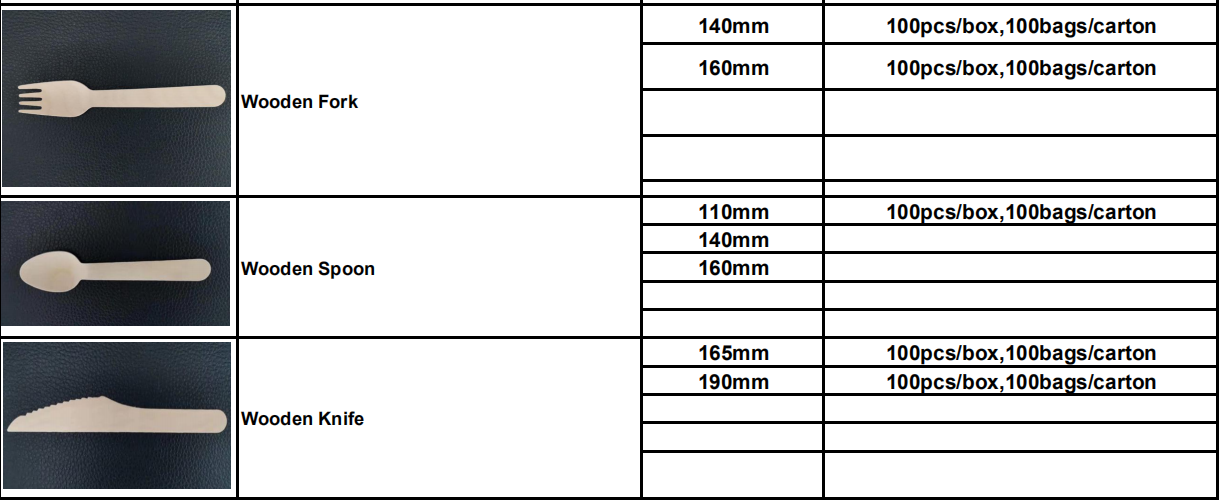Abstract : The experimental study and model analysis of the EDM workability of commonly used structural ceramic materials are carried out. It provides a new analytical method for predicting the EDM workability of structural ceramic materials under specific conditions.
Keywords: Structural ceramics EDM Machinability
Abstract:The present paper experiments with and models the machinability of structural ceramics by EDM,providing a new method of analysing the machinability of stuctural ceramics by EDM.on certain conditions.â–²
1 Introduction
EDM technology has been applied to the processing of structural ceramic materials and has been rapidly developed in the past 20 years. The inherent characteristics of structural ceramic materials make the process characteristics exhibited by EDM different from metals. Since the 1980s, many scholars have been devoted to the study of the external characteristics of EDM in structural ceramics. Different scholars have used different materials, obtained different process data under different conditions, and analyzed and summarized the same or similar technological rules. The dispersion of process laws is large and it is difficult to predict the feasibility of using EDM for certain structural ceramics. In this paper, experimental research and theoretical analysis are carried out around this issue, and a more scientific analytical method for predicting EDM workability of structural ceramics is obtained.
2 Material Selection in Experimental Design
In structural ceramics, oxides, nitrides, and carbides are the three major series. Alumina is a typical representative of a meltable structural ceramic material and is the most mature of the oxide series structural ceramics. Its storage in the earth's crust is rich, accounting for about 25% of the total weight of the earth's crust, and its low price and excellent performance. According to historical records, only Boshan District, Zibo City, Shandong Province, contains billions of tons of high-quality bauxite. The development of inexpensive and quite mature research has made the use of alumina-based composite ceramic materials a wide range of applications involving various fields such as metallurgy, chemical industry, electromechanics, shipbuilding, aerospace, and light industry. Can be used to manufacture turning tools, milling cutters, calipers, various seals, drawing dies, drawing tower wheels, sliding plates, valves for chemical equipment, pumps, bearings for astronauts, rocket nose cones, etc.
Silicon nitride is a typical representative of a class of structural ceramic materials with lower temperature decomposition, lower thermal conductivity (low temperature), and more glassy phase in the grain boundary, and is the most active and the most advanced in the structural ceramics of the nitride series. One. With excellent thermal shock resistance, low friction coefficient and strong self-lubricating ability, its application range exceeds that of alumina. In the U.S. ceramic gas turbine plan, silicon nitride is used to make rotors, stators, and scrolls. In anhydrous cold ceramic engines, hot-pressed silicon nitride is used as the piston top. In the gas turbine of the Federal Republic of Germany, Si3N4 is used as a rotor and a stator, and a reaction-fired Si3N4 is used as a burner. In Japan, piston sleeves, cylinder liners, and sub-combustion chambers in a single-cylinder diesel engine are manufactured using pressureless sintered Si3N4. Japan's Isuzu Motor Company's all-ceramic engine also uses mainly Si3N4-based structural ceramic materials. The high-temperature valves, bearings, rolling bearings and other ceramic parts developed in China are also the best performance of Si3N4-based materials.
Silicon carbide (commonly known as "carborundum") is a typical representative of a type of structural ceramic material that has no melting point, good thermal conductivity, and less glass in grain boundaries, and is the most widely used type of carbide in structural ceramics. The hardness of silicon carbide is second only to alumina, and its thermal conductivity is very good. The theoretical thermal conductivity is 400Wm*°C, which is much larger than that of alumina and silicon nitride. Its application in the tool industry has long been known. In recent years, it has been widely used in the manufacture of high-temperature components (rocket engine nozzles, magneto-electric generator electrodes, etc.), wear-resistant parts (all kinds of mechanical seal rings, wire drawing dies, etc.), corrosion-resistant parts (chemical pumps, Valves, nozzles, etc.) are the most promising high temperature materials and their normal temperature strength can be maintained up to 1200°C without significant reduction.
3 Predictive analysis of machinability
The processing efficiency and electrode loss satisfying the surface integrity are the decisive indicators to measure the feasibility of EDM for certain structural ceramic materials. For structural ceramic materials, the duration of the peak current is the key factor affecting the processing efficiency and electrode loss [1 ~3〕.
3.1. Determination of the optimal pulse width The key to determining whether a certain structural ceramic material can be processed on a specific EDM machine is whether the optimum pulse width can be obtained. By comprehensively analyzing the variation curve of the melting volume with the peak current duration ts of various materials, the optimal ts value corresponding to high efficiency and low loss can be predicted. If brass is used as a tool electrode and modeled brass is used as the anode, the maximum melting volume vs. ts curve is shown in the figure below.

As can be seen from the figure above, the maximum melting volume peaks at ts<40 ns, and the melting volume is small at 200 ns. Compared with the Vm-ts curve of the processed material, the value of ts of the processed material approaching and the positive value of the tool material away from the maximum value of the melt is optimal.
For example, comparing the Vm-ts curves [3] of the Al2O3, SiC, and Si3N4 with the above figure, the optimized pulse width of the three materials is in the range of 0.5 to 2 [mu]s. The optimal pulse width of Al2O3 is 0.5μs, and the optimal pulse width of SiC and Si3N4 is 1μs.
3.2 Prediction of Tool Electrode Loss Using the curve of the maximum melting volume with ts can predict the tool electrode loss, as shown in Table 1, Table 2 experimental and analytical results. The study parameters in Table 1 are shown in Table 3, and the study parameters in Table 2 are shown in Table 4.
Table 1 Changes in electrode loss at different pulse widths (%)
Workpiece material 0.3μs 0.5μs 1μs 2μs Experimental value Calculated experimental value Calculated experimental value Calculated experimental value Calculated value SiC 165 186 98 120 36 40 15 40 Si3N4 78 91 52 71 17 20 11 20 Al2O3 170 165 76 30 23 25 19 twenty twoTable 2 Changes in electrode losses at different peak currents (%)
Workpiece Material 15A 35A 70A 115A Calculated experimental value Experimental value Calculated experimental value Calculated experimental value Calculated value SiC 18 37 36 40 83 110 155 193 Si3N4 10 19 17 20 47 84 99 124 Al2O3 22 28 26 30 90 101 161 157Table 3 Study parameters in Table 1
Workpiece material Up(V) IP(A) ton:toff FA Tool electrode SiC, Si3N4 200 35 1:10 0.17 4mm Center hole=1.5mm Brass rod Al2O3 160 35 1:80.12
Table 4 Study parameters in Table 2
Workpiece material Up(V) Ton(μs) ton:toff FA Tool electrode SiC, Si3N4 200 1 1:8 0.17 4mm hole1.5mm brass rod Al2O3 160 0.5 1:6
0.12
The experimental value of the relative electrode loss is the ratio of the length of the electrode loss to the thickness of the workpiece when the workpiece is pierced. The calculated value of the model is the ratio of the melting volume of copper at the end of the pulse to the melting volume of the workpiece material. Analysing Table 3 and Table 4 can be seen from the data of Al2O3, the model is more accurate and can reflect the actual processing state, but the experimental and calculation data of SiC and Si3N4 are quite different. The expansion of the channel is influenced by the material properties of the electrode. The modelling of the channel radius does not produce such a large difference. The key is whether the modeling method is reasonable. From the perspective of material properties, the biggest difference between SiC, Si3N4 and Al2O3 is that the former two have no melting point, SiC decomposes at 2600°C, and Si3N4 decomposes at 1900°C. The decomposition process is irreversible, so the concept of the melting volume of these two materials is not suitable. The melting volume vs. ts curve shows that the melting volume decreases after a certain ts, indicating that the melting isotherm inside the workpiece shrinks toward the heat source. That is, as the channel expands and the energy density decreases, the melted material solidifies again at the liquid-solid interface. For a material with a melting point, the solidification law can be determined by the temperature. Without the melting point material, this rule is much more complicated because Structural ceramics are generally composite of several phases, and the eutectic and single-phase components of the phase interface determine the phase transformation law. In general, the presence of a non-melting phase will hinder the shrinkage of the melting isotherm. Therefore, the model calculation method is modified, and the calculated value and the experimental value have good similarity. The correction calculation method is: the relative electrode loss is equal to the ratio of the melting volume of copper and the 1.05 times the maximum melting volume of SiC and Si3N4 at the end of the pulse. The calculated results are shown in Table 5 and Table 6. It can be seen that the revised model has been more accurate and can reflect the actual processing state. The value of the maximum melting volume correction coefficient is related to the thermal diffusivity of the material. The higher the thermal diffusivity is, the larger the value should be. The larger the particle size of the decomposed gasification phase, the larger the value should be.Table 5 Correction results of electrode losses at different pulse widths (%)
Tool electrode 0.3μs 0.5μs 1μs 2μs Experimental value Calculated experimental value Calculated experimental value Calculated experimental value Calculated value SiC 165 180 98 99 36 40 15 13 Si3N4 78 86 52 60 17 20 11 8Table 6 Correction results of electrode losses at different peak currents (%)
Tool electrode 15A 35A 70A 115A Calculated experimental value Experimental value Calculated experimental value Calculated experimental value Calculated value SiC 18 22 36 40 83 92 155 170 Si3N4 10 15 17 20 47 59 99 1074 Summary
The curve of the maximum melting volume with the pulse width obtained by modeling analysis can be used to predict the possibility of EDM for certain structural ceramic materials. In-depth and extensive research should be conducted to compile such curves under various specific conditions into an atlas or database software, so that EDM can become an effective and convenient processing method for structural ceramics.



FAQ
Q1: Are you manufacturer or trading company?
A1: We are manufacturer.
Q2: What is the material of products?
A2: Natural Birch.
Q3: How long will you deliver the products?
A3: 30~60 days after receiving 30% T/T deposit.
Q4: What is the payment term?
A4: T/T 30% as deposit in advance and balance 70% should be paid when goods ready to ship or L/C at sight.
Q5: Do you provide samples?
A5:Yes, free samples available.
Disposable Cutlery Knife
Disposable Cutlery Knife,Disposable Wooden Cutlery Knife,Disposable Knife,Disposable Birch Wood Knife
Dalian Yongtailong Wood Industry Co.,Ltd , https://www.ytldisposablegoods.com